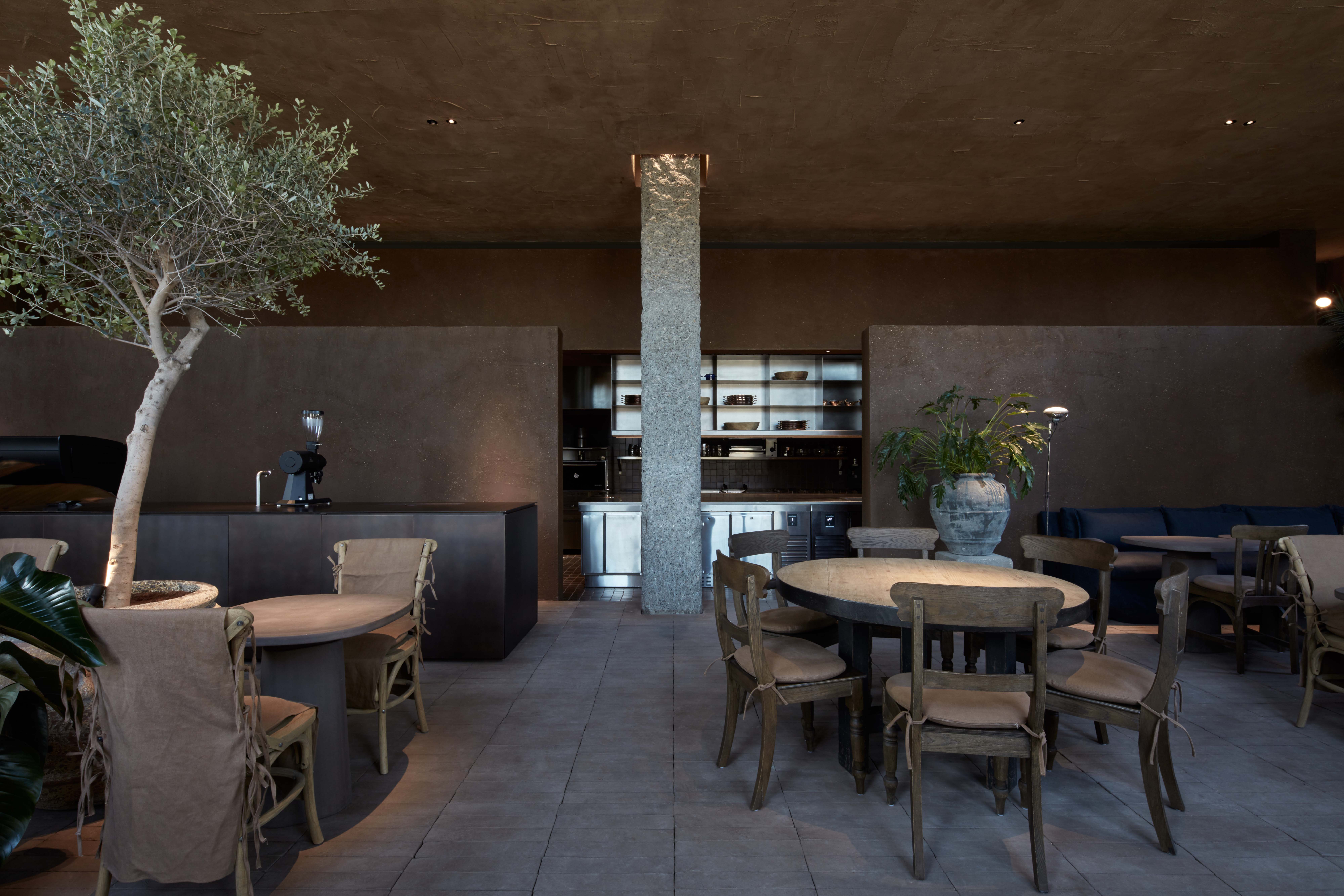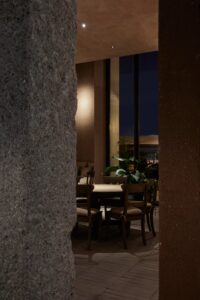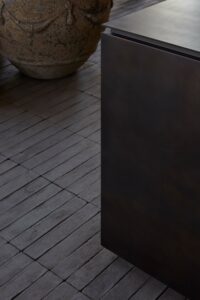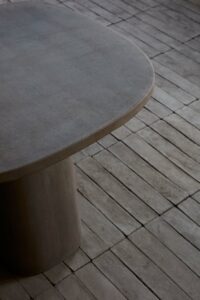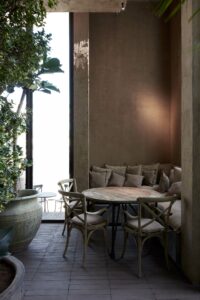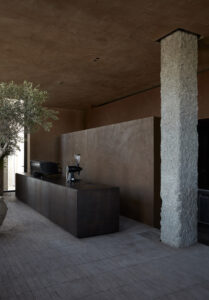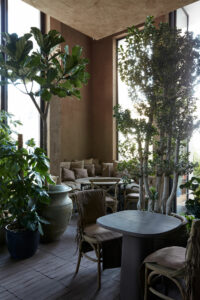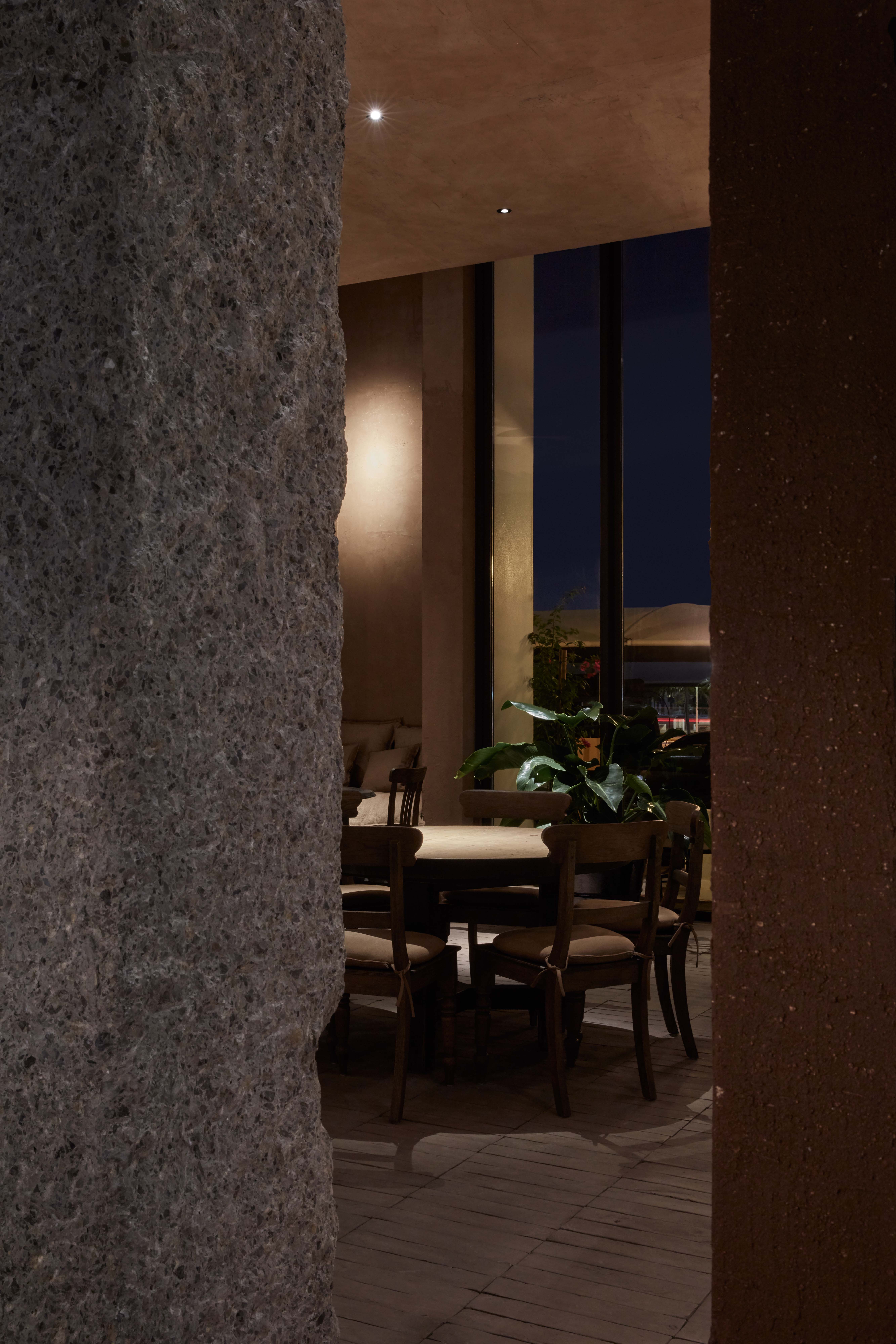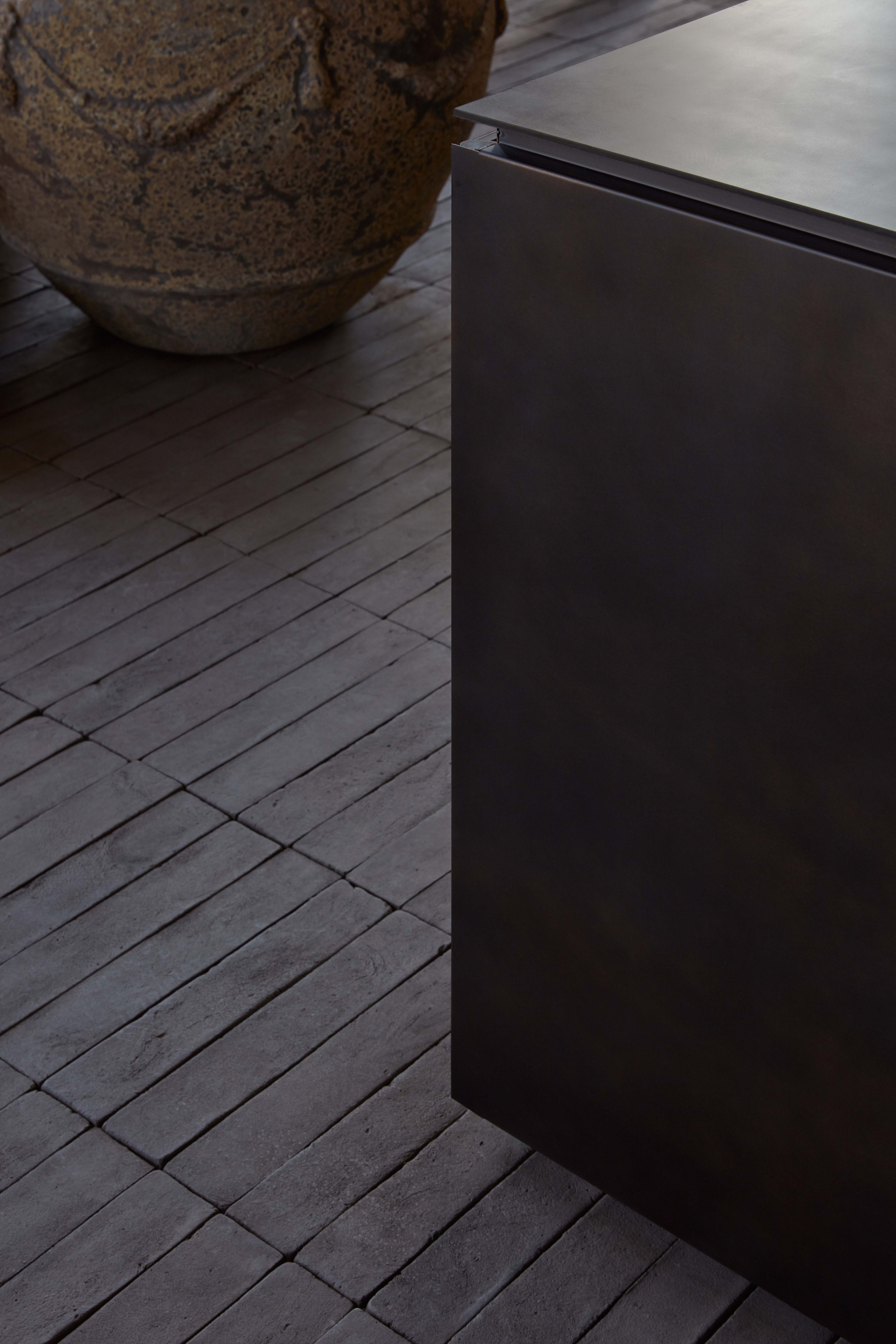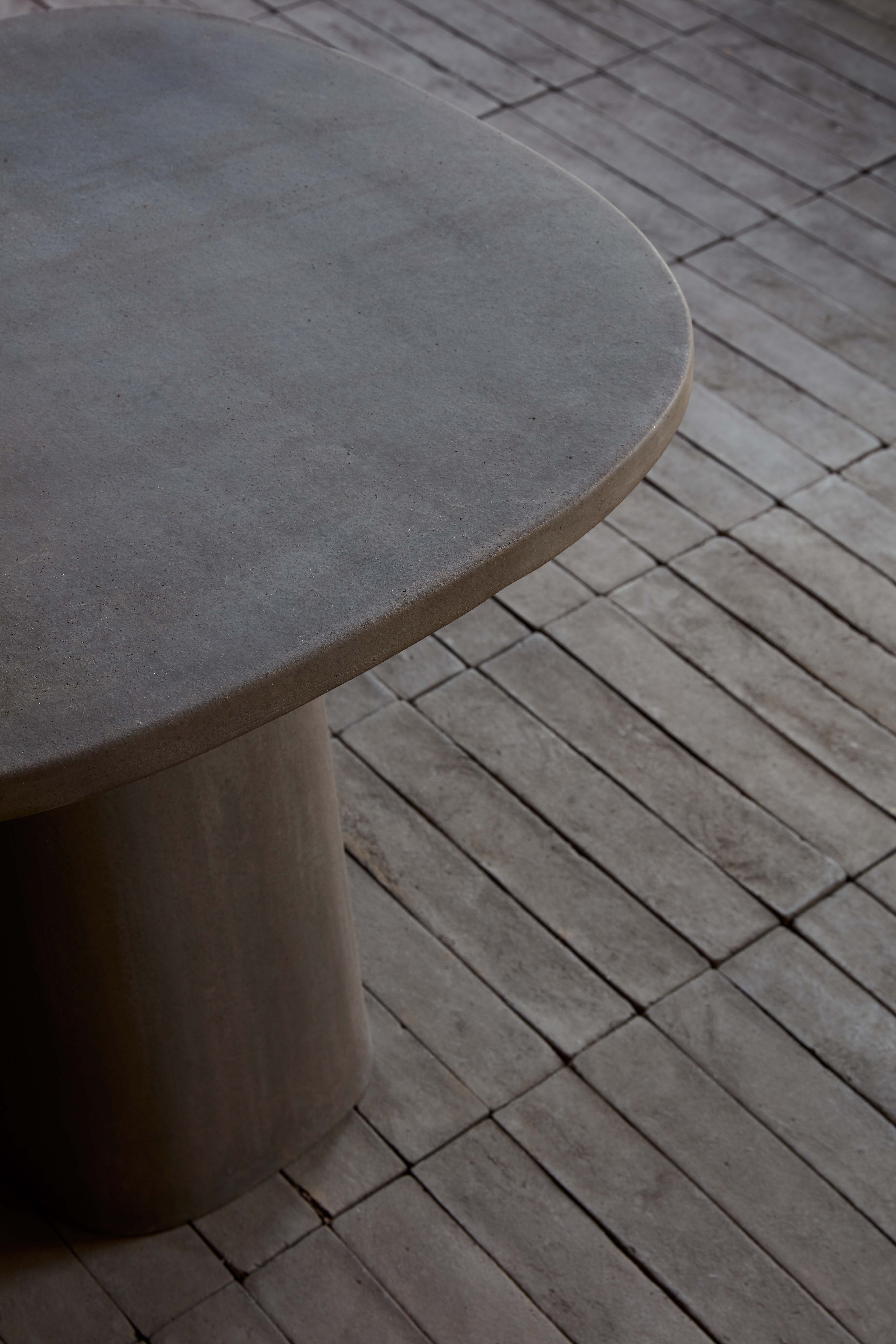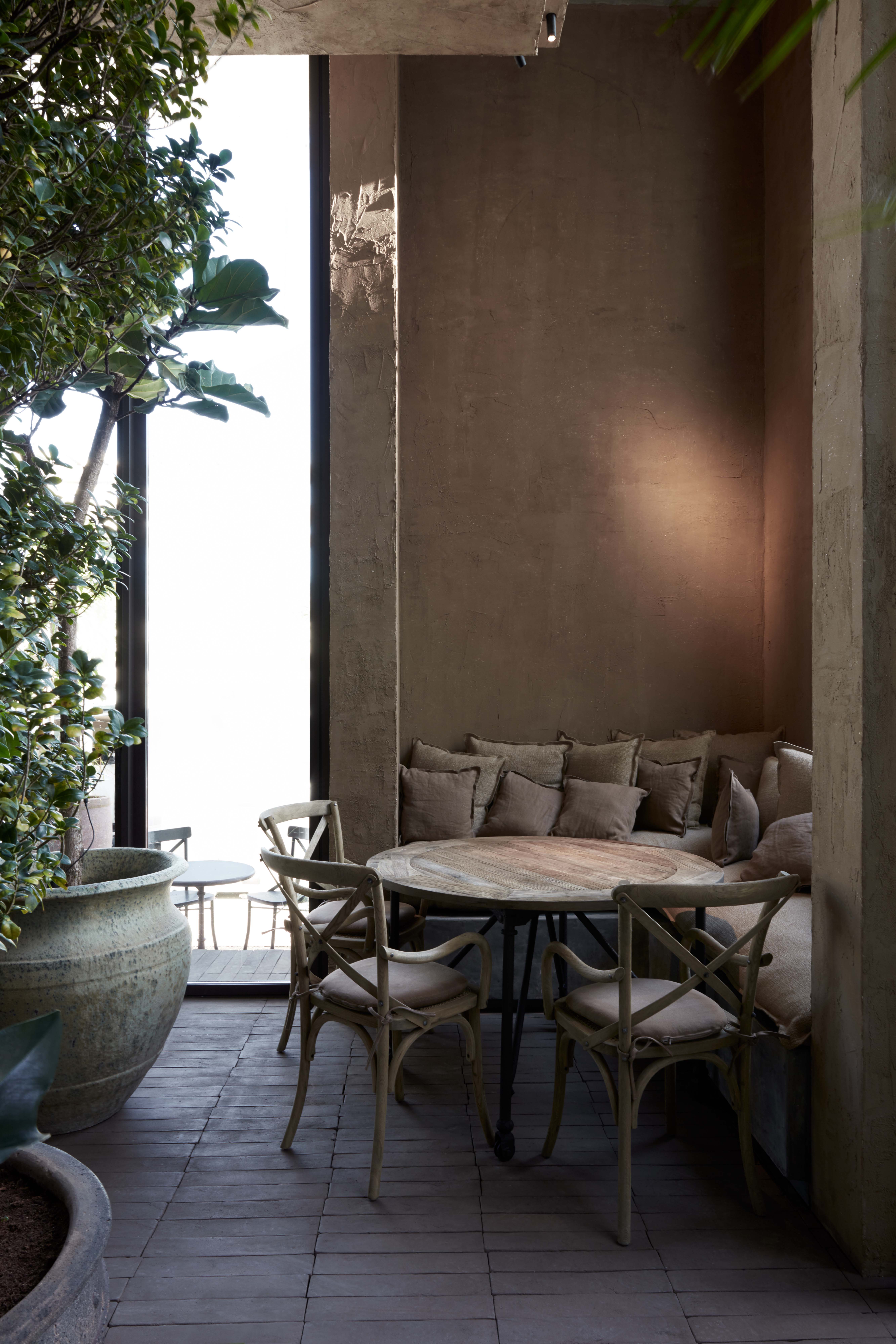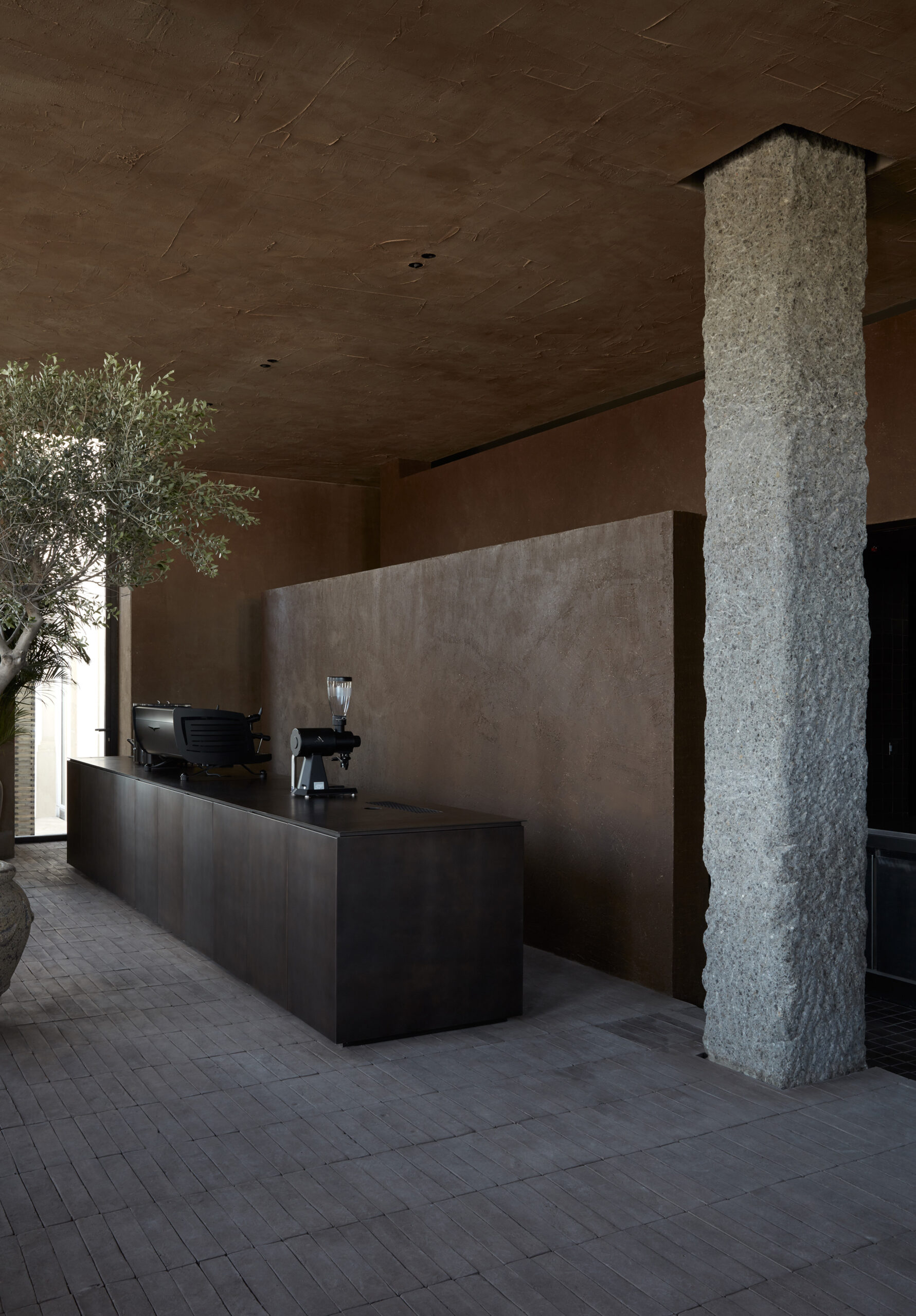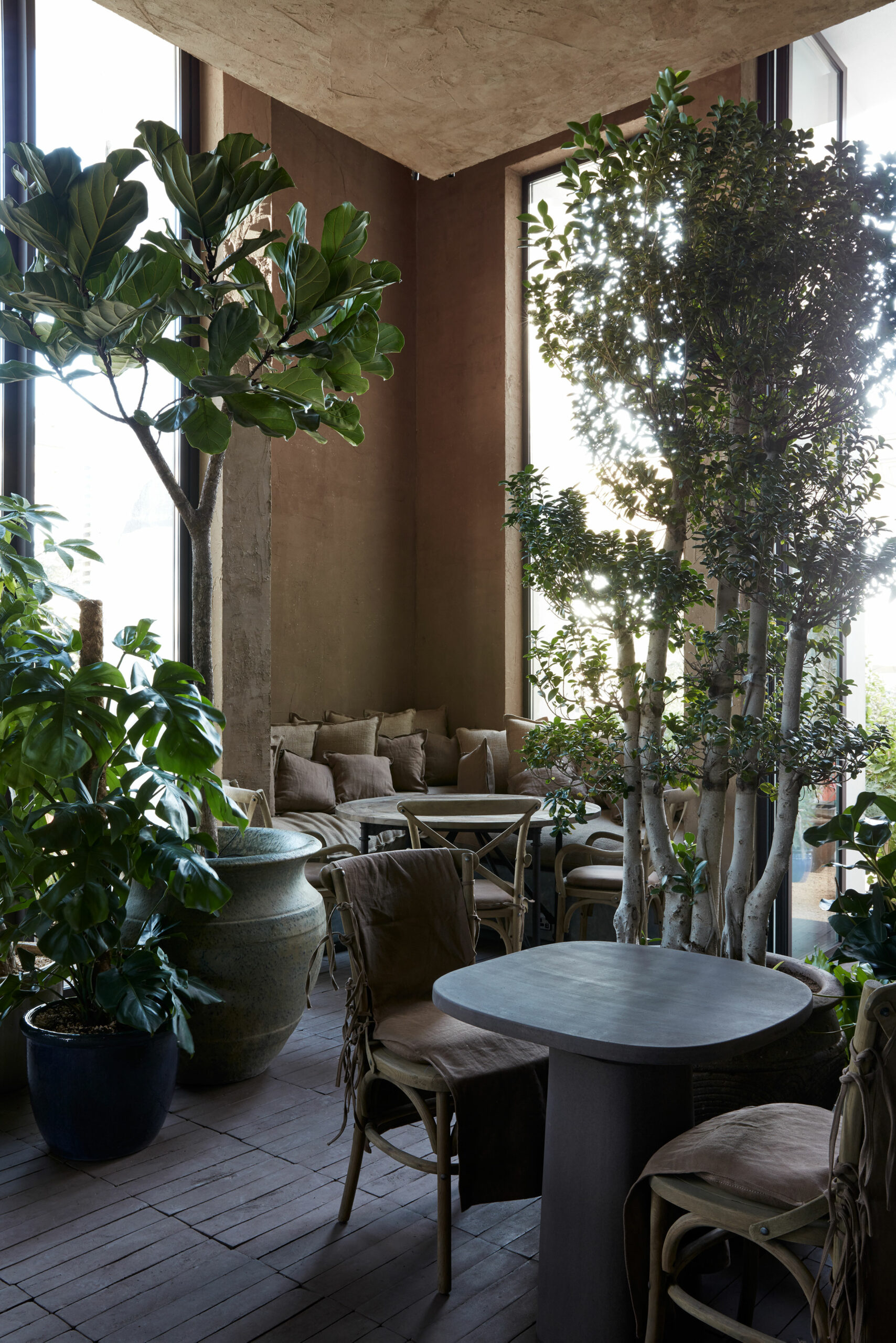FORNACE BRIONI FOR TERRA RESTAURANT IN DUBAI
Far from the stereotypes that associate a Mediterranean cuisine restaurant with a white and blue environment that winks at the sea, the new Terra Eatery in Dubai bets everything on a rustic and dusty look, with natural stone finishings and understated decor, in which the products of Fornace Brioni fit perfectly.
The restaurant is located in the Jumeriah area and was designed by Bone Studio. The architects stated: “ Terra embodies a timeless eatery, where traditional construction and application techniques evoke a homelike and hospitable experience. Aware of the busy and loud surroundings, Bone aimed to create a retreat from the buzzing city — Terra is designed to contrast the urban surroundings. For Bone, creating a sheltering atmosphere was imperative. The interior space is reminiscent of a courtyard. The lush garden envelopes the shop and acts as a natural barrier from the surrounding streets while sheltering its inhabitants in the grounded terrace. Interwoven amongst the interior space, the greenery allows guests to enjoy a private moment during their dining experience. Five- meter-high pivoting glass doors welcome visitors to the interior dining space from all three facades. The shop faces the east, allowing sharp rays of sunlight to penetrate through the clear glass doors during the brisk hours of the day. The sunlight also exposes the hues and undulations of the clay walls and uneven surfaces of the terracotta tiles”.
For the flooring, Bone Studio has chosen Moka colored Terracotta slats by Fornace Brioni. The slats are still made entirely by hand, piece by piece using wooden molds like hundreds of years ago.
The technique used to make grey cotto is one of the secrets of Fornace Brioni. This material derives from an ancient clay firing method, which has been perfected over the years and passed on verbally from one worker to another. Grey cotto is available in different shades, ranging from light grey and reaching black. The various shades are obtained by an equally unusual application of natural products, such as waxes and oils, during the final treatment given to protect the material.
Photo: Oculis Project

